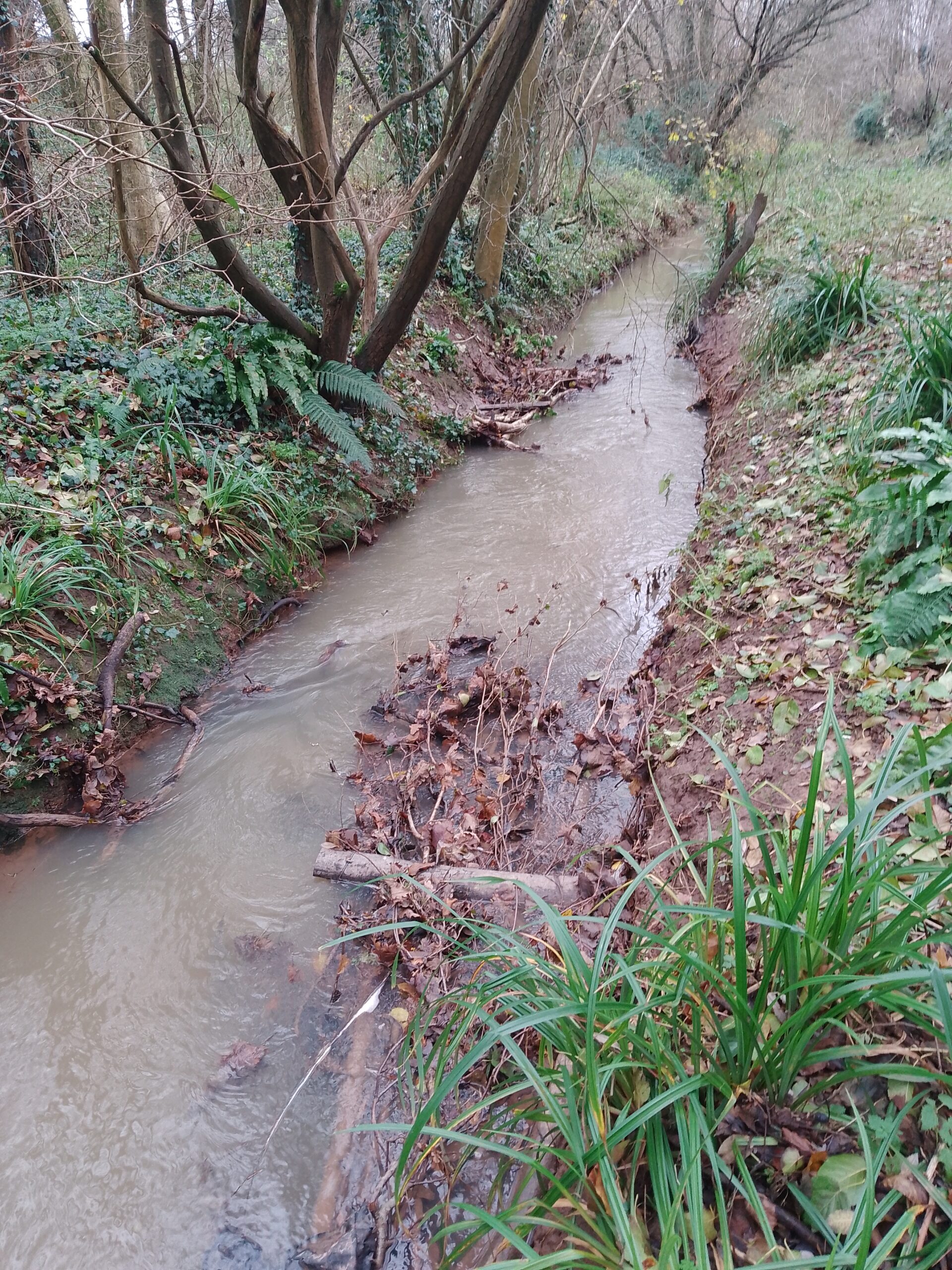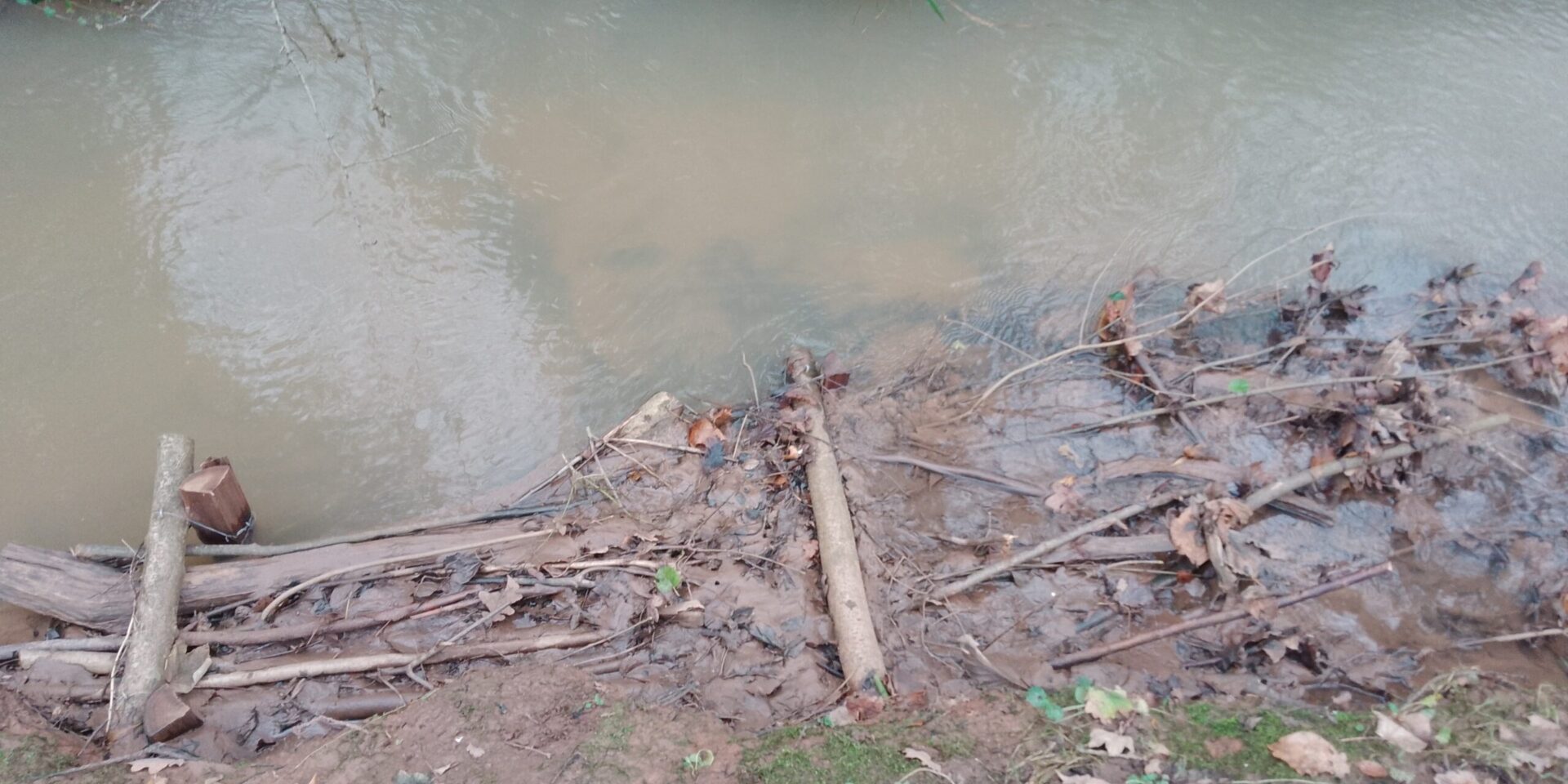The Pickedmoor Rhine is a stream running east-west through the northern end of Thornbury with the stream and surrounding woodland having been managed for many years by South Gloucestershire Council and local volunteers of the Thornbury Orchard group. The stream has suffered from over straightening, a large amount of suspended sediment in the water and little sunlight reaching the channel due to overshading from the many trees along the banks. Thanks to funding from South Gloucestershire Council and help from the Thornbury Orchard Group, BART undertook a project in November to introduce a series of wood berms and log deflectors to improve these issues and help provide much improved habitat within the stream.
Wood within river channels is an essential component of a healthy river ecosystem. Larger pieces of wood help to diversify flow patterns and so create a more complex series of habitats to suit a wider range of aquatic species. The creation of tightly packed brash wood berms helps to ‘pinch’ the channel in strategic locations to concentrate the flow within the channel creating areas of scour and deposition, the latter encouraging sediment to be deposited within the structure itself which will eventually become part of the riverbank. By adding these features into the river, we are mimicking natural processes such as trees falling into rivers while also encouraging the river to develop a more natural form as berms begin to re-establish ‘wiggly’ river channels.

Working with a contracted tree surgeon and volunteers from the Thornbury Orchard Group, BART staff spent two days selectively cutting trees from the riverbank to provide material for the structures. Working in the river, staff packed wood brash to create a tight lattice structure of intermeshed logs, branches and sticks. These were held in place with chestnut stakes that are securely pounded into the riverbed. This creates a V shaped structure with the wide end facing downstream and extending around a third of the width into the channel.
They are designed to overtop during higher river flow conditions so that the slower moving water within the structure will drop sediment that is carried within the flow. As the structures fill with sediment, they will eventually become part of the bank allowing streamside vegetation to colonise helping the structures to remain and continue to encourage healthy river processes. Additionally, larger logs were positioned at an angle within the stream and held in place with chestnut stakes to further diversify the flow patterns and provide habitat niches.
While visiting the site in December, many of the processes mentioned above were already becoming apparent. The wood berms were filling up with sediment and there was a greater complexity of flow patterns evident throughout the section of river we worked on, and we fully expect the habitats to continue to diversify with time. We would like to thank South Gloucestershire Council for their funding to make this work possible and all the volunteers from the Thornbury Orchard Group for their help and continued stewardship of this site.








